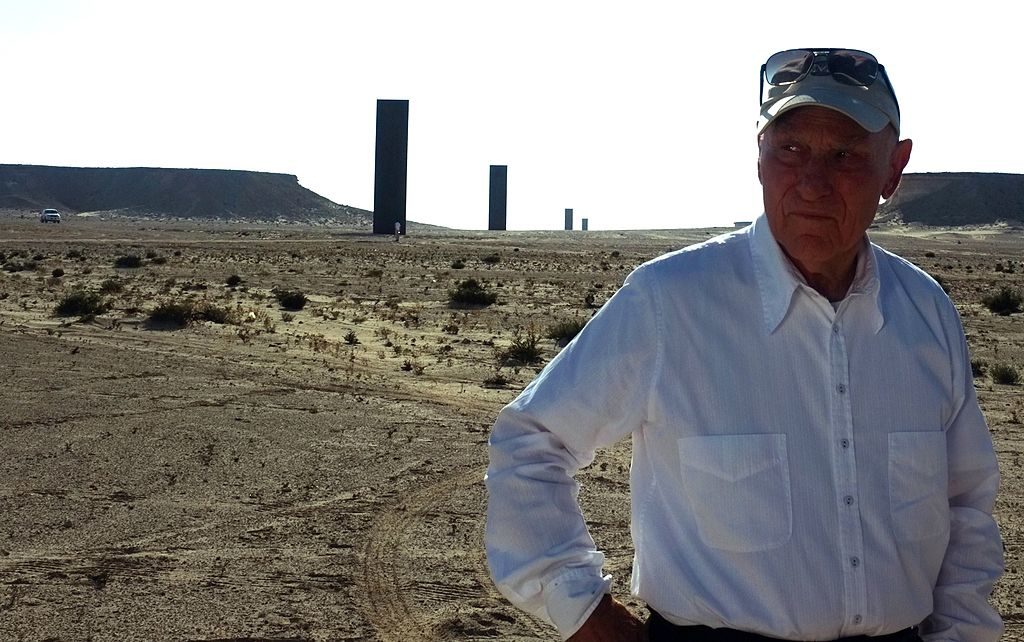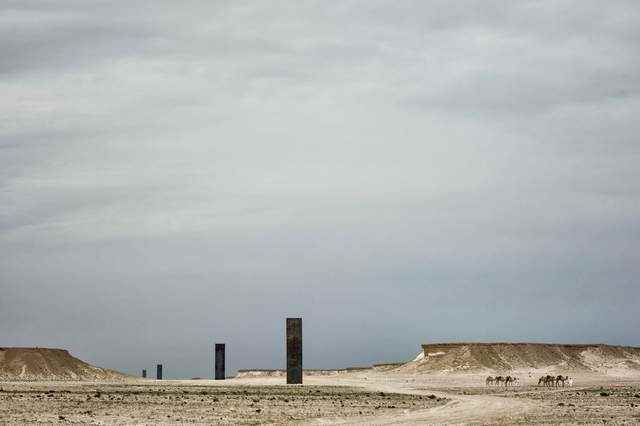Art World
Richard Serra’s Epic Steel Sculpture in the Qatari Desert Has Suffered ‘Significant and Deliberate’ Vandalism
The artist’s largest installation will be cleaned by the state-run organization that funded the project.

The artist’s largest installation will be cleaned by the state-run organization that funded the project.

A large-scale public artwork by Richard Serra in the western Qatari desert has seen “significant and deliberate damage” from visitors in recent months.
Qatar Museums, an organization that oversees a group of art institutions and public art projects in the Arab country, announced this week that it will launch a cleaning effort to restore Serra’s work, East-West/West-East, which comprises four 45-foot-tall steel plates erected in a line that spans nearly four miles.
The organization did not disclose all the details of the damage and it did not responded to a request for comment.
“Vandalism of any kind to our public art, not only affects the community’s enjoyment of the piece but also harms Qatar’s cultural heritage,” Abdullatif Al Jasmi, the director of cultural heritage protection at Qatar Museums, said in a statement. “It is important that people understand the social impact of the damage to the artworks but also that they can receive substantial fines and may be responsible for restoration.”
Al Jasmi explained that the organization is working with partners to institute a new Cultural Heritage Law, “which will build on existing regulations to strengthen the protection of arts and culture in the country.”

Richard Serra, East-West/West-East (2014). Photo: Rik van Lent.
Completed in 2014, East-West/West-East boasts the largest footprint of any of Serra’s works. It’s one of two public pieces by the artist in Qatar (the other is 7, an installation of clustered steel plates that was unveiled outside the Museum of Islamic Art in Doha in 2011). Both projects were funded by Qatar Museums, which is also responsible for installing public artworks by Louise Bourgeois, Liam Gillick, and Damien Hirst, among others.
“Public art is a national asset that we as citizens and residents can be proud of,” Qatar Museum’s head of public art Abdulrahman al-Ishaq, said. “We call upon the community to help us ensure that all public artworks are cared for and protected, preserving them for the enjoyment of current and future generations. Our public art is a fundamental part of Qatar’s cultural life, benefiting the nation and its people, both socially and economically.”